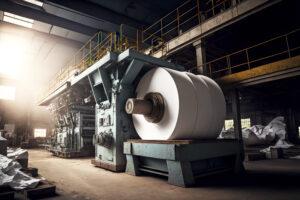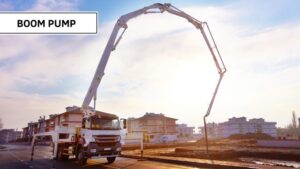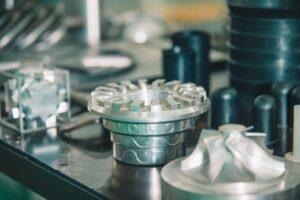
Machine productivity depends on reliable power transmission systems. What is a gear? These circular mechanical components transfer motion and force between rotating shafts through interlocking teeth. From water treatment plants to chemical processing facilities, gears enable precise speed control and torque multiplication. Understanding different types of gears helps engineers select optimal solutions for specific industrial applications, ensuring efficient operations across manufacturing environments.
Understanding Gear Fundamentals
What is a gear becomes clearer when examining its core function. These mechanical devices consist of toothed wheels that mesh together, transmitting rotational motion from one shaft to another. The fundamental principle relies on the contact between gear teeth, which prevents slipping and provides positive drive characteristics.
How gears work involves several mechanical principles. When one gear rotates, its teeth push against the mating gear’s teeth, causing rotation in the opposite direction. The gear ratio determines speed and torque relationships between input and output shafts. Smaller gears driving larger ones reduce speed while increasing torque. Conversely, larger gears driving smaller ones increase speed but reduce torque.
Key Operating Principles:
- Speed Reduction: Small gear drives large gear = slower output, higher torque
- Speed Increase: Large gear drives small gear = faster output, lower torque
- Direction Change: Meshing gears rotate in opposite directions
- Power Conservation: Input power equals output power minus friction losses
- Positive Drive: Toothed engagement prevents slipping under load
Mechanical advantage occurs through this speed-torque relationship. A 4:1 gear ratio means the input shaft rotates four times for each output rotation. This configuration multiplies torque by four while reducing output speed by the same factor. Energy conservation ensures the power remains constant minus friction losses.
Gear teeth must maintain proper contact throughout the rotation. The involute tooth profile, used in most industrial applications, provides smooth engagement and consistent motion transfer. Proper spacing, called pitch, ensures uniform load distribution across multiple teeth simultaneously.
Efficiency ratings typically range from 95-99% for quality gear systems. Losses occur through sliding friction between tooth surfaces, bearing friction, and windage at high speeds. Lubrication reduces these losses while extending component life.
Primary Gear Classifications
Types of gears fall into three main categories based on shaft arrangements. Each category serves specific applications where shaft orientation and space constraints dictate the optimal choice.
Parallel Shaft Gears
Spur gears represent the simplest gear mechanism design. These gears feature straight teeth parallel to the shaft axis. Manufacturing costs remain low due to simple machining requirements. Spur gears excel in applications requiring precise timing, such as conveyor systems and material handling equipment.
Helical gears offer improved performance over spur designs. The angled teeth create a gradual engagement that reduces noise and vibration. Manufacturing facilities choose helical gears for applications where smooth operation matters more than cost. The angled teeth distribute loads across multiple teeth simultaneously, increasing load capacity.
Intersecting Shaft Gears
Straight bevel gears handle 90-degree shaft intersections. These gears feature straight teeth that converge toward the shaft intersection point. Mining equipment and agricultural machinery commonly use straight bevel gears where robust construction outweighs noise considerations.
Spiral bevel gears provide enhanced performance through curved teeth. The spiral design enables gradual tooth engagement, reducing shock loads and noise. Automotive differentials and industrial drives benefit from spiral bevel gears’ smooth operation and increased load capacity.
Non-intersecting Shaft Gears
Worm gears excel in high-reduction applications. The worm (screw-like gear) drives a worm wheel, achieving ratios from 10:1 to 100:1 in a single stage. Self-locking characteristics prevent back drive, making worm gears ideal for lifting equipment and conveyor systems. Chemical gear reducer systems frequently incorporate worm gears for precise chemical dosing applications where consistent flow rates are critical.
Hypoid gears handle offset non-intersecting shafts. The pinion axis offsets from the gear center, allowing more compact designs. Heavy-duty industrial equipment uses hypoid gears where space limitations prevent standard bevel gear arrangements.
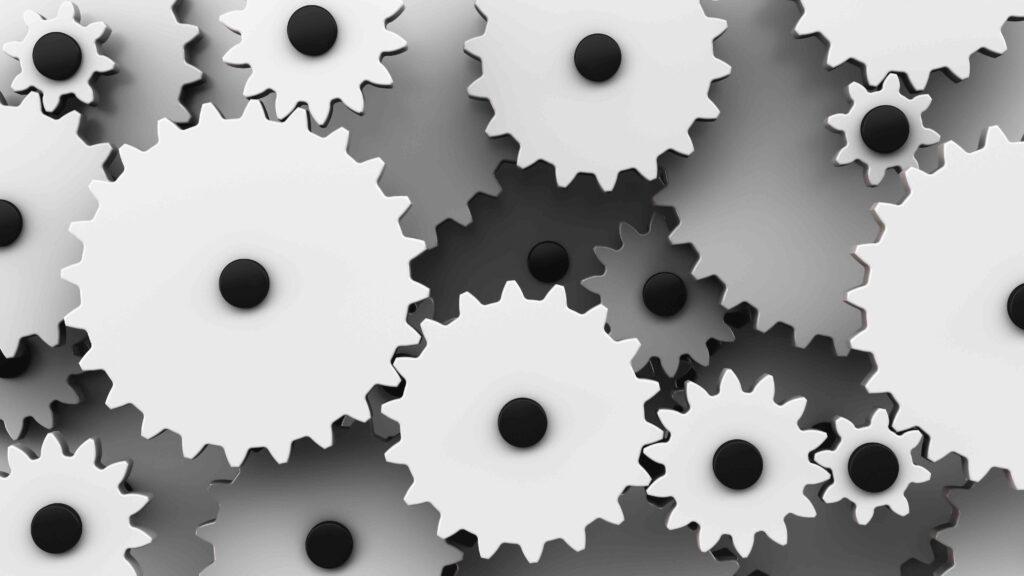
Specialized Gear Systems
Types of gears extend beyond basic configurations to include specialized systems that address unique industrial requirements. These advanced systems combine multiple gears to achieve specific performance characteristics.
Planetary Gear Systems
Planetary gears consist of a central sun gear, multiple planet gears, and an outer ring gear. This gear configurations arrangement provides compact, high-torque solutions. The carrier holding the planet gears can serve as input, output, or stationary member, enabling different speed ratios.
Wind turbine gearboxes exemplify planetary gear applications. Multiple planetary stages increase low-speed rotor rotation to generator speeds. Compact design fits within turbine nacelles while handling enormous torques from wind forces.
Industrial mixers use planetary drives for heavy-duty mixing applications. The multiple load paths through planet gears distribute forces evenly, preventing premature wear. Variable speed capabilities enable precise control of mixing processes.
Rack and Pinion Systems
Linear motion applications require rack and pinion systems. The pinion (circular gear) meshes with a linear rack, converting rotary motion to linear movement. CNC machine tools use rack and pinion drives for precise positioning along linear axes.
Automation systems benefit from rack and pinion accuracy. Gate operators, lift systems, and material handling equipment achieve precise positioning through these systems. The direct mechanical connection eliminates backlash common in screw drives.
Internal Gears
Internal gears feature teeth cut inside a ring, meshing with external pinions. This gear configuration design creates compact arrangements where space limitations prevent external gear placement. Planetary systems frequently use internal ring gears as the stationary or output member.
Pump drives utilize internal gears for space-efficient arrangements. The concentric design reduces overall system size while maintaining required speed ratios. Internal gears also reverse rotation direction without additional gears.
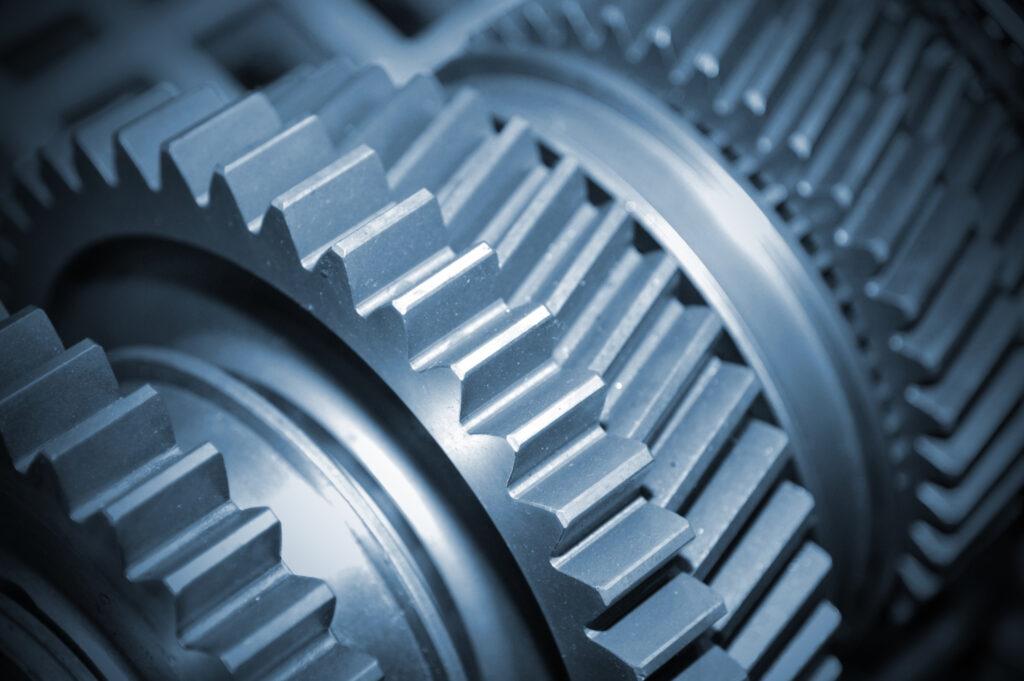
Looking For Reliable Gear Reducers?
Gear Tooth Configurations and Design
Types of gear teeth determine performance characteristics and application suitability. Tooth geometry affects load capacity, noise generation, and manufacturing requirements.
Common Gear Tooth Configurations:
- Involute Profile: Standard industrial choice for consistent velocity ratios
- Cycloidal Profile: Precision applications requiring exact timing
- 20-Degree Pressure Angle: Balanced load capacity and thrust forces
- 14.5-Degree Pressure Angle: Lower thrust, reduced power capacity
- 25-Degree Pressure Angle: Higher loads, increased thrust forces
Involute tooth profiles dominate industrial applications. The mathematical curve ensures constant velocity ratios and smooth power transmission. Standardized involute systems enable interchangeability between manufacturers’ gears.
Pressure angles, typically 20 degrees, define tooth shape characteristics. Higher pressure angles increase load capacity but generate more thrust forces. Lower angles reduce thrust but limit power transmission capability.
Types of gear teeth also include cycloidal profiles for specialized applications. Clock mechanisms and precision instruments use cycloidal teeth where exact timing matters more than power transmission. These profiles eliminate sliding friction but require precise manufacturing.
Module systems standardize tooth size relationships. Metric modules specify the pitch diameter divided by the number of teeth. Standard modules ensure compatibility between gears from different manufacturers while simplifying design calculations.
Surface treatments enhance gear performance. Carburizing increases surface hardness while maintaining tough cores. Nitriding provides excellent wear resistance for highly loaded applications. Shot peening improves fatigue resistance by introducing compressive stresses.

Industrial Applications by Gear Type
Types of gears serve diverse industrial sectors, each requiring specific performance characteristics. Understanding application requirements guide proper gear selection for optimal results.
Manufacturing and Production
Conveyor systems rely heavily on gear mechanism designs for reliable material transport. Spur gears handle light-duty applications where cost matters most. Helical gears serve heavy-duty conveyors requiring smooth operation and high load capacity.
Machine tools demand precise motion control. Hobbing machines use gear trains for accurate workpiece rotation during gear-cutting operations. The gear ratios must maintain exact relationships to produce accurate gear teeth.
Robotic systems require compact, precise drives. Planetary gears fit within joint spaces while providing necessary speed reduction. Backlash elimination ensures accurate positioning for assembly operations.
Process Industries
Chemical processing equipment operates in harsh environments requiring reliable power transmission. Stainless steel gears resist corrosion from process chemicals. Enclosed gearboxes protect internal components from contamination while enabling safe operation around hazardous materials.
Water treatment facilities use gear drives for pump operations, mixing systems, and filtration equipment. Variable speed capability enables process optimization based on flow requirements and treatment objectives.
Food production demands sanitary designs meeting FDA requirements. Smooth surfaces prevent bacterial growth, while washdown capabilities enable thorough cleaning. Enclosed drives prevent contamination of food products.
Power Generation
Wind turbine gearboxes represent some of the largest industrial gear applications. Multiple stages increase rotor speeds from 20-50 RPM to generator speeds of 1500-1800 RPM. Extreme loads and environmental conditions require specialized designs and materials.
Generator drive systems use gear couplings to connect prime movers with electrical generators. Flexible couplings accommodate shaft misalignment while transmitting full power. Maintenance schedules coordinate with generator overhauls to minimize downtime.
Hydroelectric plants employ gear systems for gate operators and turbine controls. Precise positioning capabilities enable optimal water flow control for maximum power generation efficiency.
Gear Selection and Performance Considerations
Proper gear configurations selection requires analyzing multiple performance factors. Load requirements, speed ratios, and operating environment influence optimal gear choice.
Essential Selection Criteria:
- Load Capacity: Continuous vs. intermittent duty requirements
- Speed Ratios: Single-stage (up to 6:1) vs. multi-stage reductions
- Operating Environment: Temperature, humidity, corrosive conditions
- Noise Limitations: Helical for quiet operation, spur for economy
- Space Constraints: Planetary for compact designs, parallel shaft for accessibility
- Maintenance Access: Enclosed vs. open gear arrangements
Duty cycles affect gear life significantly. Continuous operation requires higher quality gears compared to intermittent service. Load distribution analysis ensures adequate safety factors for expected service life.
Speed ratios determine gear type selection. Single-stage reductions up to 6:1 favor spur or helical gears. Higher ratios require multiple stages or specialized types like worm gears.
Environmental factors influence material selection and protective measures. Corrosive atmospheres require stainless steel or protective coatings. High temperatures demand special lubricants and heat treatment considerations.
Noise requirements affect gear type selection. Helical gears generate less noise than spur gears due to gradual tooth engagement. Precision manufacturing reduces noise through improved surface finishes and tighter tolerances.
Cost considerations balance initial investment against operating expenses. Higher quality gears cost more initially but provide longer service life and reduced maintenance requirements. Life cycle cost analysis guides optimal selection.
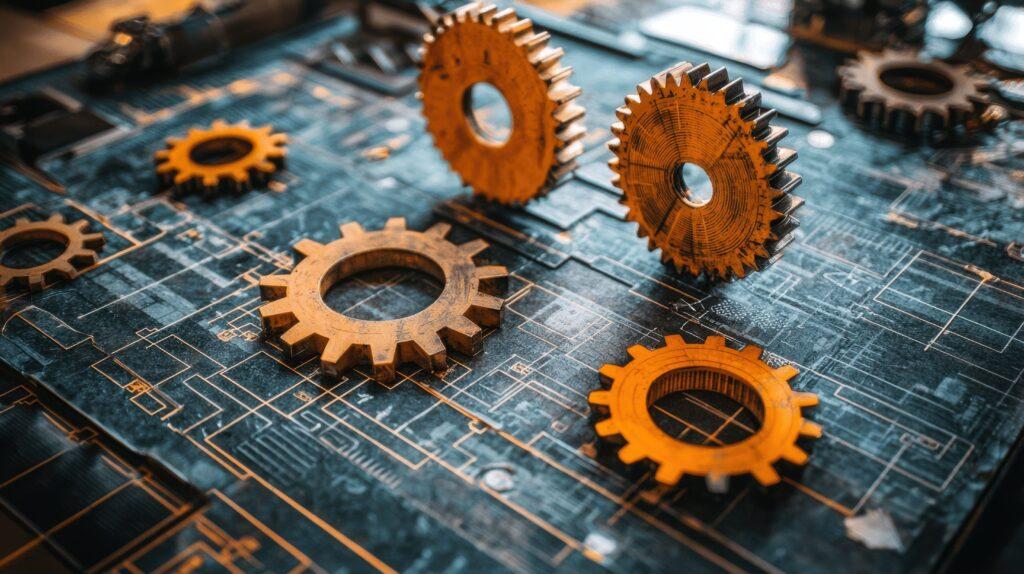
Maintenance and Service Requirements
Proper maintenance ensures reliable gear mechanism operation throughout service life. Lubrication, inspection, and timely repairs prevent catastrophic failures and extend component life.
Maintenance Best Practices:
- Regular Lubrication: Oil bath systems for enclosed units, grease for open gears
- Vibration Monitoring: Frequency analysis to detect developing problems
- Visual Inspection: Check for uniform wear patterns and proper alignment
- Oil Analysis: Monitor contamination levels and wear particle content
- Temperature Monitoring: Detect overheating from inadequate lubrication
- Load Analysis: Verify operating loads remain within design limits
Lubrication requirements vary by gear type and operating conditions. Oil bath systems suit enclosed gearboxes operating at moderate speeds. Grease lubrication serves open gears and low-speed applications. Synthetic lubricants extend service intervals and improve high-temperature performance.
Wear patterns indicate operating conditions and potential problems. Uniform wear across tooth faces indicates proper alignment and loading. Localized wear suggests misalignment, overloading, or inadequate lubrication.
Vibration monitoring detects developing problems before failure occurs. Frequency analysis identifies specific gear mesh frequencies and harmonic content. Trending analysis tracks deterioration rates for planned maintenance scheduling.
Professional gearbox services provide specialized expertise for complex gear systems. Experienced technicians understand failure modes and repair techniques specific to different gear types. Regular inspections identify problems early, preventing costly emergency repairs and production downtime.
Preventive maintenance schedules coordinate with production requirements. Oil analysis detects contamination and wear particles indicating component condition. Scheduled replacements prevent unexpected failures during critical production periods.
Future Trends in Gear Technology
Advanced materials continue improving gear performance and durability. Powder metallurgy enables complex shapes to be impossible with traditional machining. Carbon fiber-reinforced plastics reduce weight in aerospace applications while maintaining strength requirements.
Smart monitoring systems integrate sensors directly into gear systems. Wireless technology transmits vibration, temperature, and load data for real-time condition monitoring. Predictive analytics identify optimal maintenance timing based on actual component conditions rather than calendar schedules.
Additive manufacturing opens new possibilities for gear design and production. 3D printing enables rapid prototyping of complex geometries. Small batch production becomes economical for specialized applications requiring unique gear configurations.
Optimizing Your Gear Systems
Understanding types of gears enables informed decisions for industrial applications. Each gear type offers specific advantages suited to particular operating conditions and performance requirements. Proper selection considers load requirements, speed ratios, environmental factors, and maintenance capabilities. How gears work through mechanical principles remains constant, but applications continue expanding as technology advances. Professional expertise ensures optimal gear selection and maintenance for reliable, efficient industrial operations.
Working with experienced suppliers provides access to specialized knowledge and quality components. AMED-US offers comprehensive gear solutions backed by decades of industrial experience across diverse applications throughout the Americas.






